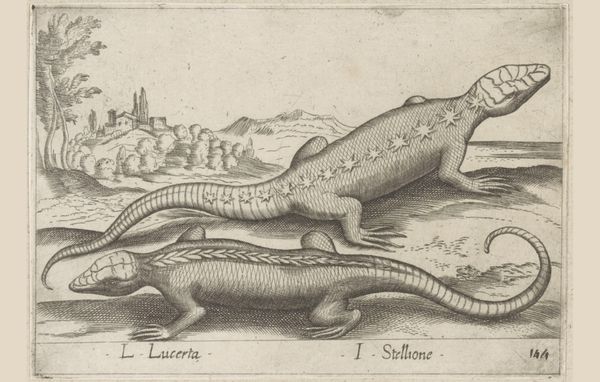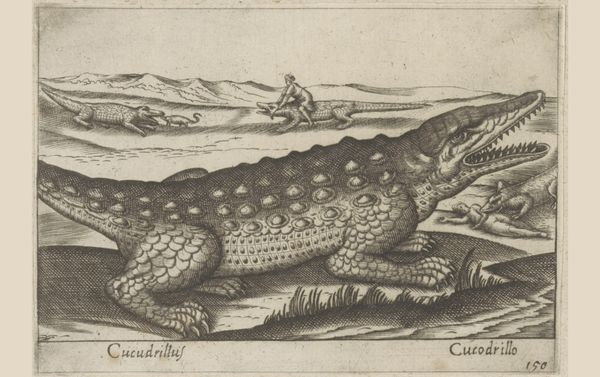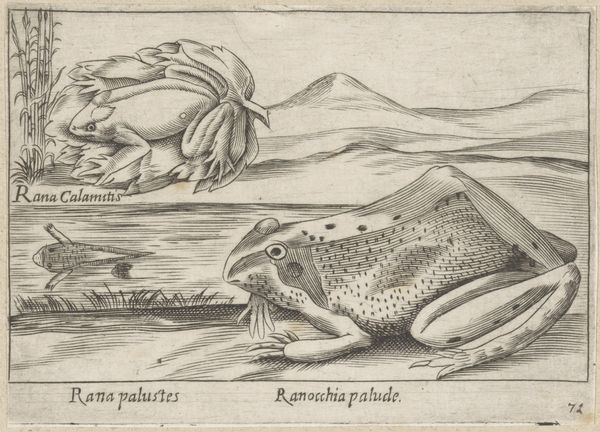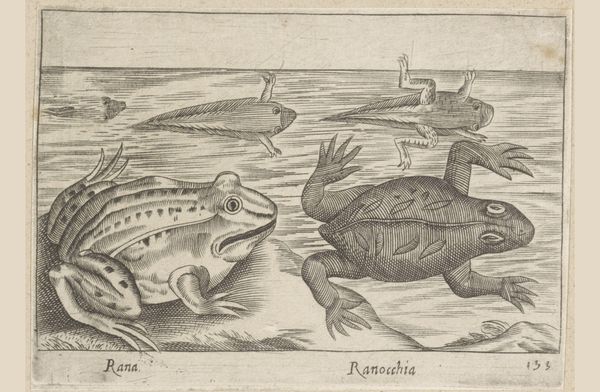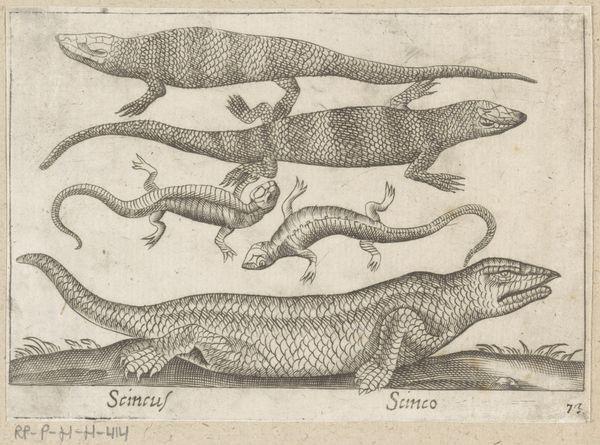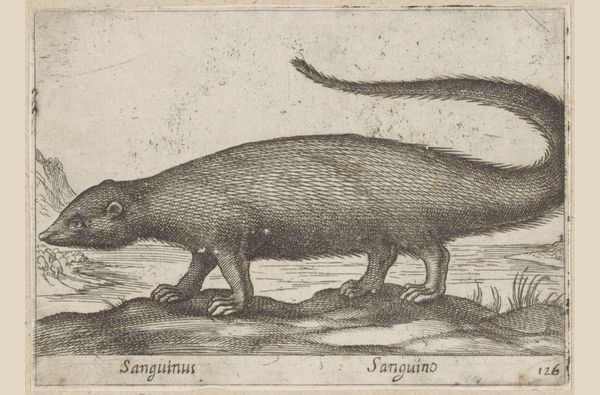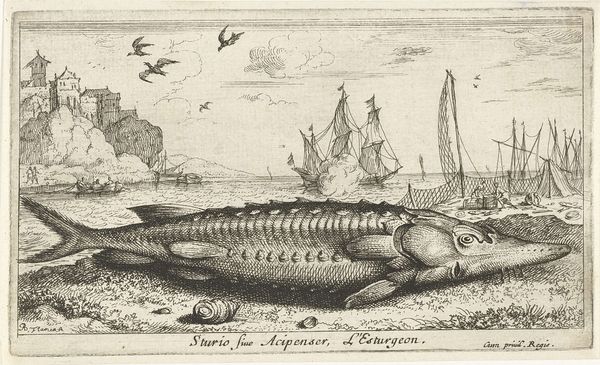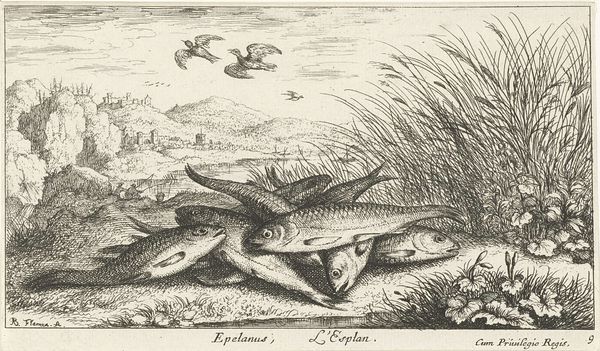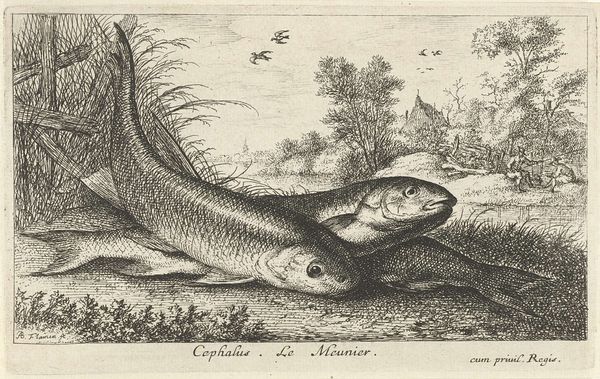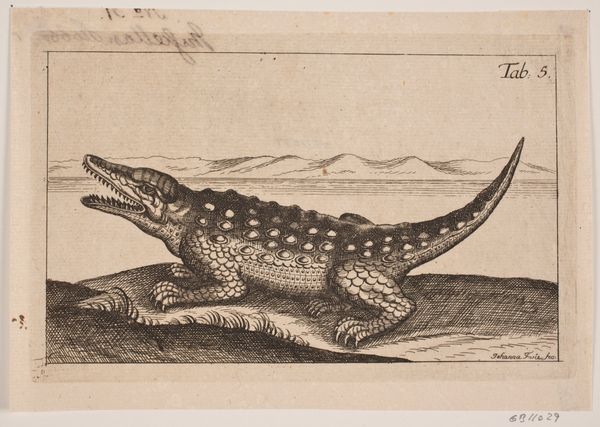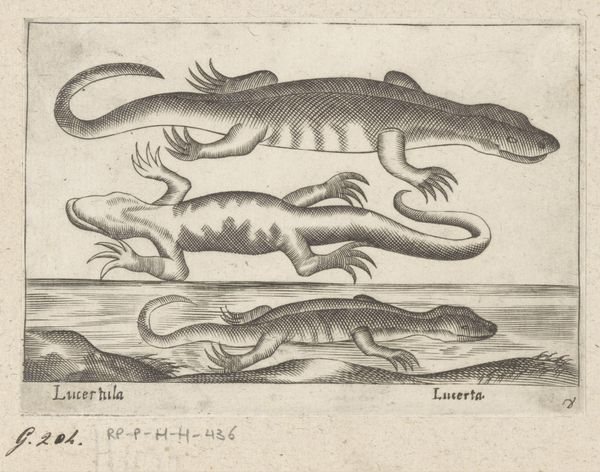
print, engraving
#
baroque
#
animal
# print
#
pen sketch
#
engraving
#
realism
Dimensions: height 95 mm, width 137 mm
Copyright: Rijks Museum: Open Domain
Editor: Here we have Antonio Tempesta’s "Two Lizards," or "Twee hagedissen" as it’s known here in the Rijksmuseum. It’s an engraving, made before 1650. They’re just so…lizard-y. It makes me think about the whole industry of natural history illustration at this time. What do you make of it? Curator: Let's think about the labour involved. An engraving like this requires significant skill and time. It’s not just about depicting the lizards, it's about the process of meticulously transferring that image onto a plate. How do you think the materials used, the copperplate, the ink, might have influenced the final image? Editor: Well, the precision allowed by the engraving process definitely highlights every tiny scale and crease, making it scientifically useful but also, oddly, decorative. Curator: Precisely. This brings up the question of function and the consumption of images. Was this meant to be purely scientific, or was there an element of display, a kind of visual consumption intended for a wealthier clientele who valued both knowledge and aesthetics? These prints would have been part of a much larger industry. What does that mass production imply about art's function here? Editor: That’s a good point, the scale makes you really consider how the artistic, scientific, and economic factors were intertwined at the time. Curator: It challenges our assumptions about high art versus craft. The engraver, even if replicating someone else’s design, is engaged in a skilled labor, producing multiples for a specific market. Seeing art as product really shapes how we think of creative expression then. Editor: Right, I hadn't really thought about it like that – all the choices that go into production – affecting how we now think of scientific observation. Curator: It gives you something to consider and makes a stronger relationship to that idea of labor. Thanks.
Comments
No comments
Be the first to comment and join the conversation on the ultimate creative platform.
